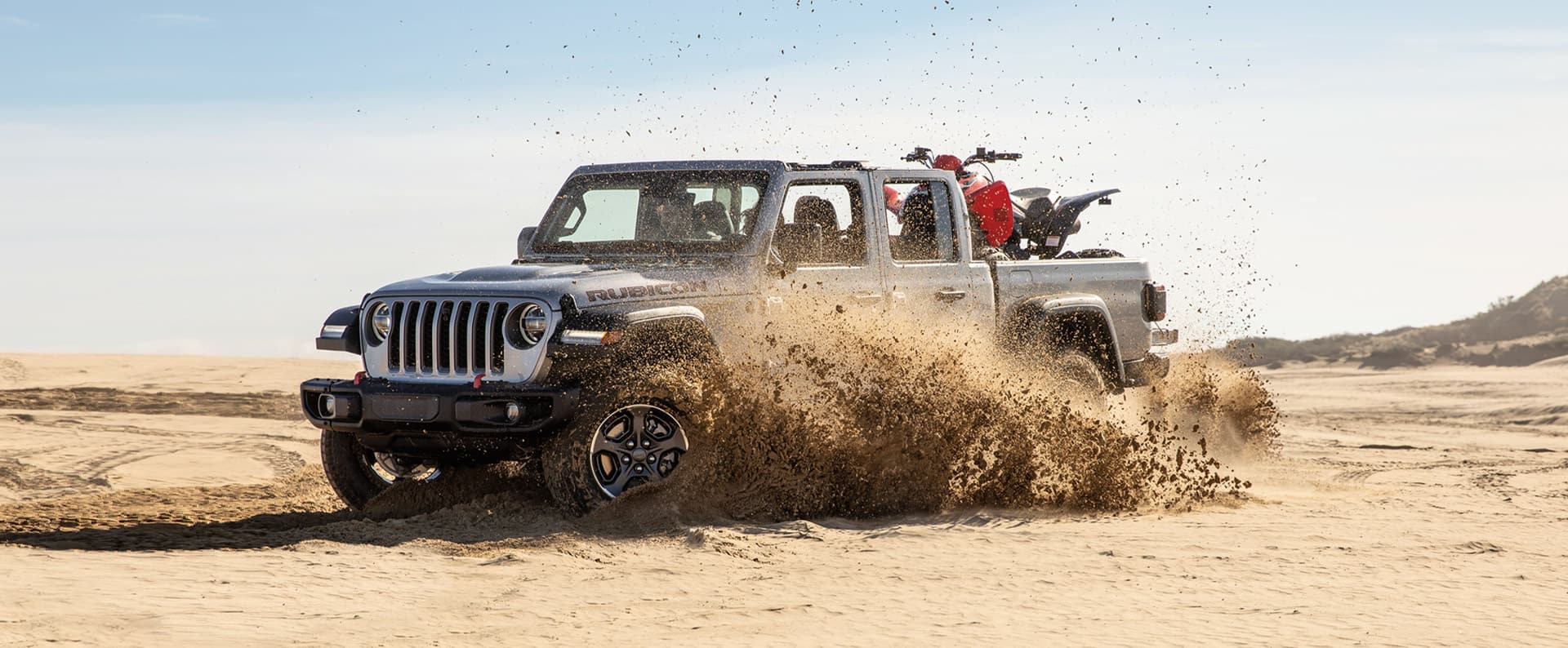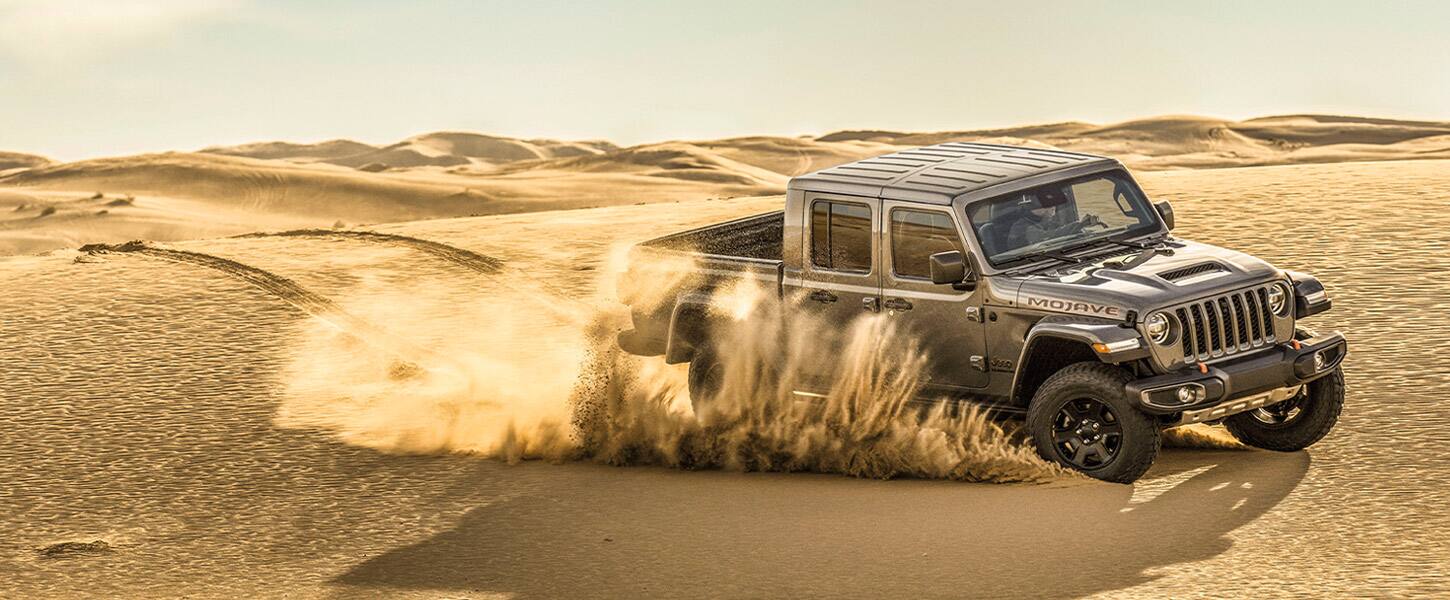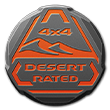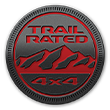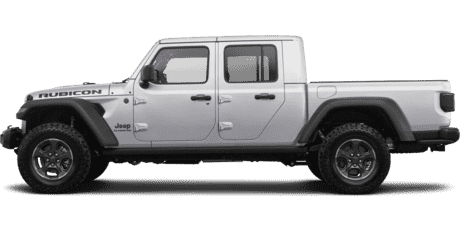- 2021 Jeep Gladiator
- Overview
- What’s New for 2021?
- Pricing and Which One to Buy
- Engine, Transmission, and Performance
- 2021 Jeep Gladiator Pros and Cons Review: One Huge Flaw
- Excellent new engine, suspension options can’t overcome its terrifying towing characteristics.
- View Other 2021 Truck Of The Year Contenders And Finalists Here
- 2021 Gladiator
- GLADIATOR CAPABILITY
- LUXURY NEVER COMPROMISES
- GLADIATOR CAPABILITY
- LUXURY NEVER COMPROMISES
- DESERT RATED
- DESERT RATED
- RESPECT THE BADGE
- TRACTION
- WATER FORDING
- MANEUVERABILITY
- ARTICULATION
- GROUND CLEARANCE
- CAPABILITY ELEVATED
- 2021 Jeep Gladiator Mojave Pros And Cons: The Different Jeep
- Focus on high-speed desert running sets this Jeep apart.
- Purposefully Built
- Still A Convertible
- Better Every Day Than A Rubicon
- Stuck With The Base V6
- Barely More Efficient Than A Raptor
- $65,000
2021 Jeep Gladiator
Review, Pricing, and Specs
Our car experts choose every product we feature. We may earn money from the links on this page.
- Highs Always off-road-ready, doorless and roofless configurability, can haul and tow more than a Wrangler.
- Lows Busy behavior on the highway, unimpressive fuel economy, not as nimble on the trails as a Wrangler.
- Verdict The Gladiator gives Jeep fans and off-roaders a more versatile tool that’s still really cool.
Overview
Jeep hasn’t offered a model with a cargo bed since the early ’90s, but the 2021 Gladiator finally gives the brand’s fans a cool and useful tool. The mid-size pickup truck is basically a more versatile version of the popular Jeep Wrangler, which earned it an Editors’ Choice award. It tows more (up to 7760 pounds versus 3500) than its SUV counterpart, and its longer wheelbase helps it ride better, too. Still, the truck requires regular steering inputs when cruising on the highway to keep it from straying, and it’s not as easy to maneuver on the trails as the smaller Wrangler. Along with a strong V-6 and a standard stick-shift transmission, the Gladiator offers a torquey diesel engine option with 442 lb-ft. While the 2021 Gladiator can get pricey in a hurry, its removable body panels and rugged persona make it one of the best pickups around.
What’s New for 2021?
Jeep hasn’t announced the full roster of changes to the 2021 Gladiator lineup, but it has confirmed what we’ve known for a while: the truck with a seven-slot grille will add a diesel engine option. The oil-burning 3.0-liter V-6 will develop 260 horsepower and a substantial 442 lb-ft of torque. Although we’re still waiting on pricing and EPA fuel-economy figures, we’re told the diesel will be offered on the Sport, Overland, and Rubicon models.
Pricing and Which One to Buy
We think the Sport S is the perfect canvas to create our ideal Gladiator. It comes standard with the 285-hp V-6 and a manual transmission. Ours would wear flashy Hydro Blue paint with the optional color-matched fenders. We’d also choose the all-terrain tires and anti-spin rear differential for improved traction when the blacktop ends, and we’d add the side steps to make getting in out and easier. We’d also select the three-piece hard top for its ability to quickly open up the roof. Inside, we’d add the headliner for better noise and temperature insulation and upgrade to the larger 8.4-inch touchscreen, because it adds navigation and is more sophisticated than the standard 5.0-inch unit. Our other preferred options include the Cargo Management pack (400-watt power inverter, an under-seat storage bin, and a bed-mounted 115-volt outlet) and the auxiliary switches and upgraded charging system for any lightbars or accessories that we’ll surely add for maximum Jeepness.
Engine, Transmission, and Performance
The Gladiator is powered by a 3.6-liter V-6 that produces 285 horsepower and 260 lb-ft of torque routed through a standard six-speed manual transmission or an optional eight-speed automatic. We tested an Overland model with the automatic, which needed 7.2 seconds to scoot to 60 mph. In other words, it’s slightly slower than most competitors. The Jeep adds a diesel 3.0-liter V-6, which develops 260 ponies and a mighty 442 lb-ft of twist. Compared with the regular Wrangler, the Gladiator has an extra 19.4 inches between the front and rear wheels. Jeep says this helps improve the pickup’s ride and handling. Now that we’ve driven several examples, we can confirm that it drives much like the Wrangler. The truck’s steering isn’t extremely precise and the ride can be busy on uneven surfaces. Still, these characteristics are part of the formula that make the Gladiator both a legitimate pickup truck and a trail-ready tool. Most enthusiasts care about the truck’s off-road equipment anyways, which includes everything from copious skid plates to rock-crawling axle ratios to the ability to ford up to 30 inches of water. Generous ground clearance and approach/departure angles further help the Gladiator conquer parts unknown.
Источник
2021 Jeep Gladiator Pros and Cons Review: One Huge Flaw
Excellent new engine, suspension options can’t overcome its terrifying towing characteristics.
- Improved fuel economy
- Better off-road capability
- Better steering
- Reduced payload and towing capacity
- Leaky soft top
- Scary towing experience
Character and heritage are as much Jeep’s stock and trade as off-road capability. «It’s a Jeep thing» can be as much praise as it can be damnation, though, depending on who’s saying it and why. The 2021 Jeep Gladiator has gotten better at being a Jeep, but it’s hardly better at being a truck.
View Other 2021 Truck Of The Year Contenders And Finalists Here
The Gladiator’s repeat invitation to our Truck of the Year competition hinged on a pair of important new options: a 260-hp, 442-lb-ft 3.0-liter turbodiesel V-6 and a desert-bashing suspension on the new Mojave. Although not offered together, the EcoDiesel engine and Mojave trim level each bring impressive capability to the Gladiator line. Both, however, come with compromises to its ability to do truck things.
The diesel engine brings much-needed low-end torque to the Gladiator’s repertoire, making the truck not only empirically quicker but also more comfortable to drive. It gets up and moves off the line better, it gets up to freeway speeds a full second quicker than the standard gas V-6, and it passes with ease at highway speeds. It does all of this while bumping the Gladiator to best-in-class city mpg and tied for best highway mpg. It’s just too bad Jeep charges you $6,000 for the privilege of paying more for diesel at fewer fueling locations.
The new Mojave trim level and its high-performance suspension, meanwhile, give the truck a whole new dimension of off-road capability: speed. Able to absorb enormous impacts without fear of damage or loss of control, the Mojave is an absolute riot off-road in any conditions and gives up a minuscule amount of rock-crawling capability to the Rubicon trim.
Both versions of the Gladiator come at the expense, however, of both payload and towing capacity. Be it the diesel engine’s weight and cooling needs or the Mojave’s soft suspension, each gives up hundreds of pounds of payload capacity and up to 1,000 pounds of towing capacity.
Worse, the towing experience with either version can only be described as scary and, frankly, bordering on dangerous. Connected to a 5,200-pound, 23-foot Airstream Flying Cloud travel trailer (comfortably under the trucks’ 6,000- to 6,500-pound limits), both Gladiators struggled mightily to maintain control on anything but perfectly smooth, straight asphalt with zero wind or traffic.
Any alteration to perfect conditions sent the trailer swaying across the lane and even out of it. The Gladiators simply could not control the trailer over bumpy pavement, in windy conditions, or in the wash of other large vehicles. Neither the trailer-brake-equipped diesel nor the wide-track (but sans trailer brake) Mojave.
Источник
2021 Gladiator
GLADIATOR CAPABILITY
LUXURY NEVER COMPROMISES
Anything but average, Gladiator capability comes standard with legendary 4×4 performance and is engineered to conquer mud, snow, sand, rocks and nearly any other terrain found on Planet Earth.
GLADIATOR CAPABILITY
LUXURY NEVER COMPROMISES
Anything but average, Gladiator capability comes standard with legendary 4×4 performance and is engineered to conquer mud, snow, sand, rocks and nearly any other terrain found on Planet Earth.
DESERT RATED
DESERT RATED
The desert is an unforgiving environment where only those who are fully prepared should go. Vehicles carrying the Desert Rated badge have been tested on the sand and dunes to prove their ability to handle the intense heat, intrusive sand and harsh, unpredictable driving conditions.
RESPECT THE BADGE
Trail Rated® capability comes standard on Gladiator. To earn the badge, a vehicle must conquer a series tests on the toughest terrain, prove its ability to withstand harsh conditions and deliver incredible off-road capability.
TRACTION
WATER FORDING
MANEUVERABILITY
ARTICULATION
GROUND CLEARANCE
CAPABILITY ELEVATED
Gladiator Rubicon is made for rocky terrain thanks to a collection of equipment and features that take legendary Jeep® Brand 4×4 capability to new levels.
Gladiator Rubicon offers two impressive ways to maximize your drive. The standard front and rear Tru-Lok® Electronic Locking Differentials offer incredible power delivery to the wheels to help maintain momentum on tough terrain with maximum traction. New for 2021, the rear axle can now be locked in 4HI Mode for use at higher speeds or on the dunes.
Engaging the Segment-Exclusive sway bar disconnect results in a 30% increase in front wheel articulation.
The Rock-Trac® transfer case with 4:1 low range delivers up to an 84:1 crawl ratio , with massive torque to the wheels of Gladiator Rubicon. It\u2019s tailor-made for traversing steep inclines or crawling over trail obstacles, giving you even more control on tough terrain.
Help protect the sill of your cab with wheel-to-wheel steel rock rails. Plus, steel rock rails behind the rear wheels help to guard the box so you can traverse aggressive terrain without worry.
Branded FOX aluminum-bodied 2-inch diameter shocks transform the performance of Gladiator by using race-proven damping control to provide a comfortable on-road ride and predictable off-road handling in even the toughest conditions.
Источник
2021 Jeep Gladiator Mojave Pros And Cons: The Different Jeep
Focus on high-speed desert running sets this Jeep apart.
Jeep is not a brand that typically steps out of its very particular box. It’s an SUV manufacturer that builds vehicles for slowly lumbering along a trail or up a rocky path. And while there are exceptions to every rule (hello Grand Cherokee Trackhawk!), its vehicles take the Trail Rated badges seriously.
That’s why the Jeep Gladiator Mojave is such a breath of fresh air. Rather than a vehicle designed solely for crawling up rocky outcroppings, it takes a page out of the Ram TRX’s book. This is a desert runner, a thing designed for dust, dunes, and high speeds. Unfortunately, it only has the hardware for the first two items, not the third. At the same time, the Gladiator Mojave suffers from some of the same ills as the Gladiator Rubicon. We like it a whole lot, but between purpose and price, it’s a little hard to understand the Mojave’s role.
save over $ 3,400 on average off MSRP* on a new Jeep Gladiator
Purposefully Built
With respect to Jeep’s popular Rubicon and Trailhawk trims, we’re all-in on the Mojave-specific details. From the orange accents, to the meaty 2.5-inch Fox shocks, to specific drivetrain changes designed specifically for the Mojave’s desert-running mission, this Gladiator feels like a long-overdue complement to Jeep’s off-road enthusiast lineup.
There are practical benefits to these changes, too. The Mojave-specific shocks and the Gladiator’s longer wheelbase made this inarguably the most stable member of the broader Wrangler family – on paved roads, we experienced little of the solid-axle wobble we’ve come to associate with Jeep’s most traditional vehicles. And faced with washboard dirt trails, the Gladiator Mojave proved plenty happy to bound over them at speed, its uprated shocks and 33-inch tires absorbing the worst of the abuse.
Still A Convertible
We’ll never get tired of yanking the roof and doors off a Jeep. Okay, that’s a lie, because the doors are heavy as hell and you’ll need two people to wrangle (pun intended) the available hardtop. The entire process is exhausting. But after a bit of work, there are few vehicles that can match the elemental driving experience of a roofless, doorless Jeep. The Gladiator Mojave doesn’t really add much to this formula, but hey, occasionally we need to remind brands that things are cool and they should keep doing them. Carry on, Jeep.
Better Every Day Than A Rubicon
This might be controversial, but the Gladiator was already our favorite member of the extended Wrangler family because of the way the longer wheelbase makes everyday life more tolerable. The Gladiator Mojave extends that lead, giving Jeep’s pickup truck all the attitude and style of a Rubicon without sacrificing much in the way of on-road livability.
The ride is more composed, and while it’s fair to argue that you’re giving up breakover angle and enlarging the Wrangler’s tight turning circle by moving to the Gladiator, we find those minor sacrifices unless you’re off-roading on a literal daily basis. If that’s the case, carry on with your Wrangler. But for those who only spend a few days a month in the dirt, the Gladiator and specifically the Gladiator Mojave is better balanced and more livable.
Are You Not Entertained?
Stuck With The Base V6
It’s a real shame Jeep sticks Mojave owners with the default 3.6-liter V6. It’s not that the Pentastar is bad – okay, it is old – but that the 3.0-liter diesel engine or the Wrangler’s mild-hybrid four-cylinder offer improved performance with other tangible benefits. Specifically, both the turbocharged 2.0-liter and the oil burner provide far more low-end torque, which the V6 is desperately short on.
Sure, ordering either of these engines means giving up the option of a six-speed manual transmission, but the eight-speed ZF automatic is good enough to make that an easy trade. The diesel is also quite a bit quieter than the Pentastar, which grows wheezy and unpleasant as the engine speed climbs.
And if we’re making wishes, the Gladiator Mojave’s purpose makes it seem like an obvious choice for a 392 variant. So yeah, Jeep, if you’re reading, let’s get on that.
Barely More Efficient Than A Raptor
The other reason we’d opt for a different engine comes down to fuel economy. With just 285 horsepower, 260 pound-feet of torque, and an EPA-estimated fuel economy rating of 17 miles per gallon city, 22 highway, and 19 combined, the Gladiator Mojave is down 165 horsepower and 250 pound-feet of torque on a Ford Raptor. And yet, the twin-turbocharged Ford F-150 Raptor nets 15 mpg city, 18 highway, and 16 combined. According to the EPA’s website, you’ll save $500 per year on fuel costs with the Gladiator, but we’d happily hand over all that extra coin for the added power and torque.
$65,000
You might be wondering why we brought up the Raptor. It’s because our Gladiator Mojave’s as-tested price matches the hi-po F-150’s starting price. Sure, the Jeep is substantially cheaper in its base form – $43,875 – but you’ll have to give up a whole lot of gear to maintain that price. You won’t get a hardtop, or an 8.4-inch touchscreen, the eight-speed automatic transmission, LED headlights, leather upholstery, a forward-facing camera, or any of the active safety gear.
The good news is that a stripped-out Gladiator Mojave will be mechanically identical (gearbox aside) to our $65,000 test truck. While we’d miss some of that equipment, nothing about this truck felt like it was carrying $21,000 worth of options.
Источник


